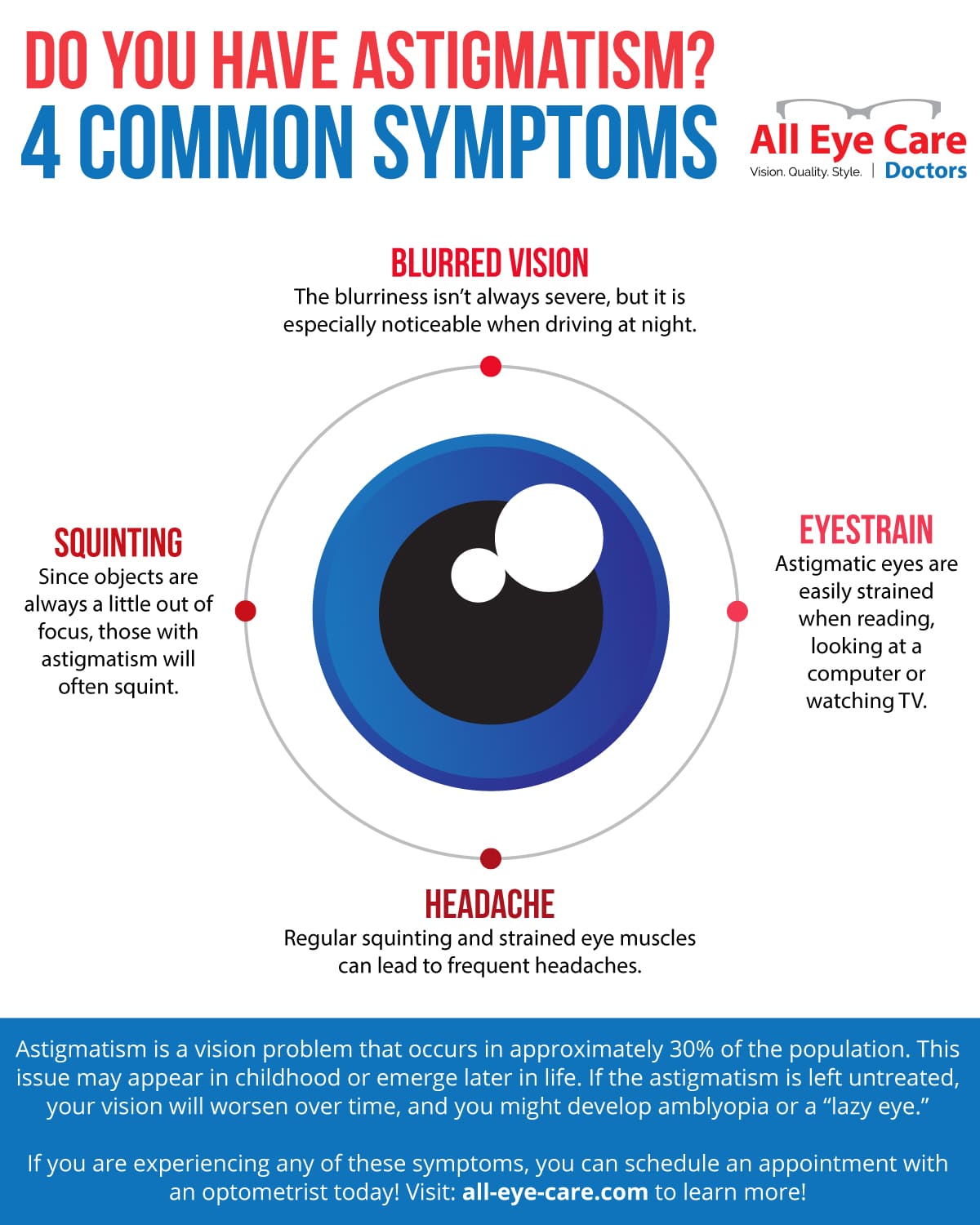Exactly How Astigmatism Influences Vision - Usual Misconceptions As Well As Misconceptions

Content author-Clifford Price
Astigmatism is an usual eye problem that blurs distance and also near vision. It occurs when the front surface area of your eye (cornea) isn't uniformly rounded, however rather shaped like an egg or a football. This abnormality influences how your eyes flex light, triggering blurry vision.
It is essential to have a detailed eye test to discover astigmatism early and handle it with prescription lenses or LASIK surgical procedure. This can decrease the demand for squinting, which can trigger persistent eye strain.
Misconception 1: Astigmatism is caused by scrunching up your eyes
Unlike most eye troubles, astigmatism is not triggered by scrunching up your eyes. Rather, it's the result of irregularities in the eye's cornea and also lens that cause blurry vision.
Generally, the cornea and lens at the front of your eye have a round shape that permits light to focus dramatically on the retina at the back of your eyeball. With astigmatism, the cornea and lens have more of an oval form, causing light to bend unevenly when entering your eye. This can create your vision to be blurry whatsoever ranges.
Individuals with astigmatism might squint to try to enhance their blurry vision, which can bring about eye strain and frustrations. It is essential to see an experienced eye treatment professional asap if you observe scrunching up your eyes or other signs of astigmatism. Your eye doctor can advise rehabilitative glasses or call lenses to aid you see plainly in all ranges. Astigmatism is one of the most usual refractive mistakes that burglarizes people of clear vision, in addition to myopia (nearsightedness), hyperopia (farsightedness) and also presbyopia (aging blur). It influences adults as well as youngsters alike.
Myth 2: Astigmatism is a hereditary problem
Astigmatism is a refractive error caused when your cornea or lens have an uneven contour. This inequality causes light that enters your eye to be bent unevenly, which can cause fuzzy vision in all ranges. Many people that have actually astigmatism are born with it, but some might get it from eye injuries, diseases or surgery. Eye care experts aren't sure why the form of one's cornea or lens differs from person to person, yet they do understand that it is hereditary and also can be given via generations.
There are https://www.businesstimes.com.sg/life-culture/health-matters/an-eye-test-can-save-your-life of astigmatism: routine and also irregular. A regular astigmatism implies that your cornea - the clear front layer of the eye - isn't totally round like a basketball, but it is more extended, shaped much more like a football. This indicates that the light entering your eye strikes the retina at greater than one factor, which brings about fuzzy or altered vision. The various other kind of astigmatism is uneven astigmatism, which suggests that your cornea and/or lens are bent in more than one instructions or steeper in the bottom than the top.
Myth 3: Astigmatism is irreversible
A lot of astigmatism is genetic. However it can likewise be caused by eye injuries, surgery, aging, or scarring. It could also establish from the shape of your cornea or lens. The primary cause is when the principal meridians of your eyes (the steepest and flattest components) are not perpendicular to every other. This causes obscured vision since the retina can't concentrate clearly on the picture.
It's important to visit an eye doctor if you notice any adjustments in your vision. Motivate gos to can assist capture much more severe issues, such as keratoconus. This condition triggers the cornea to thin and also come to be much more conical. This makes it difficult to see as well as can affect depth understanding. Scrubing your eyes can increase your threat for this illness, as well. Dry eyes as well as allergic reactions can additionally add to the issue. One of the most typical therapy for astigmatism involves corrective lenses, which can include glasses or get in touch with lenses. Other options consist of orthokeratology, which makes use of inflexible call lenses to reshape the cornea, or laser surgical treatment.
Misconception 4: Astigmatism is painful
The eye is designed to filter light into the retina and also concentrate it onto the rear of the eye (the cornea or lens). When these frameworks are misshapen, nonetheless, vision can be blurry. This refractive error can be remedied with prescription eyeglasses and also call lenses or by having astigmatic keratotomy surgical procedure, which involves making little cuts on the steepest contours of the cornea.
The most typical signs and symptom of astigmatism is blurred vision, which can make it difficult to read or see items in the distance, even when you are resting near them. You may also have trouble judging ranges or seeing clearly at night, when you are most likely to experience glow and also halos around lights.
It is possible to develop astigmatism at any type of age or after an eye injury, but many people are born with this refractive error. http://mayola1britt.booklikes.com/post/5747305/the-relevance-of-follow-up-care-after-lasik-surgical-procedure can get worse as the eyes ages, which is why it is necessary to have routine eye exams to discover as well as treat any type of adjustments in your vision.

